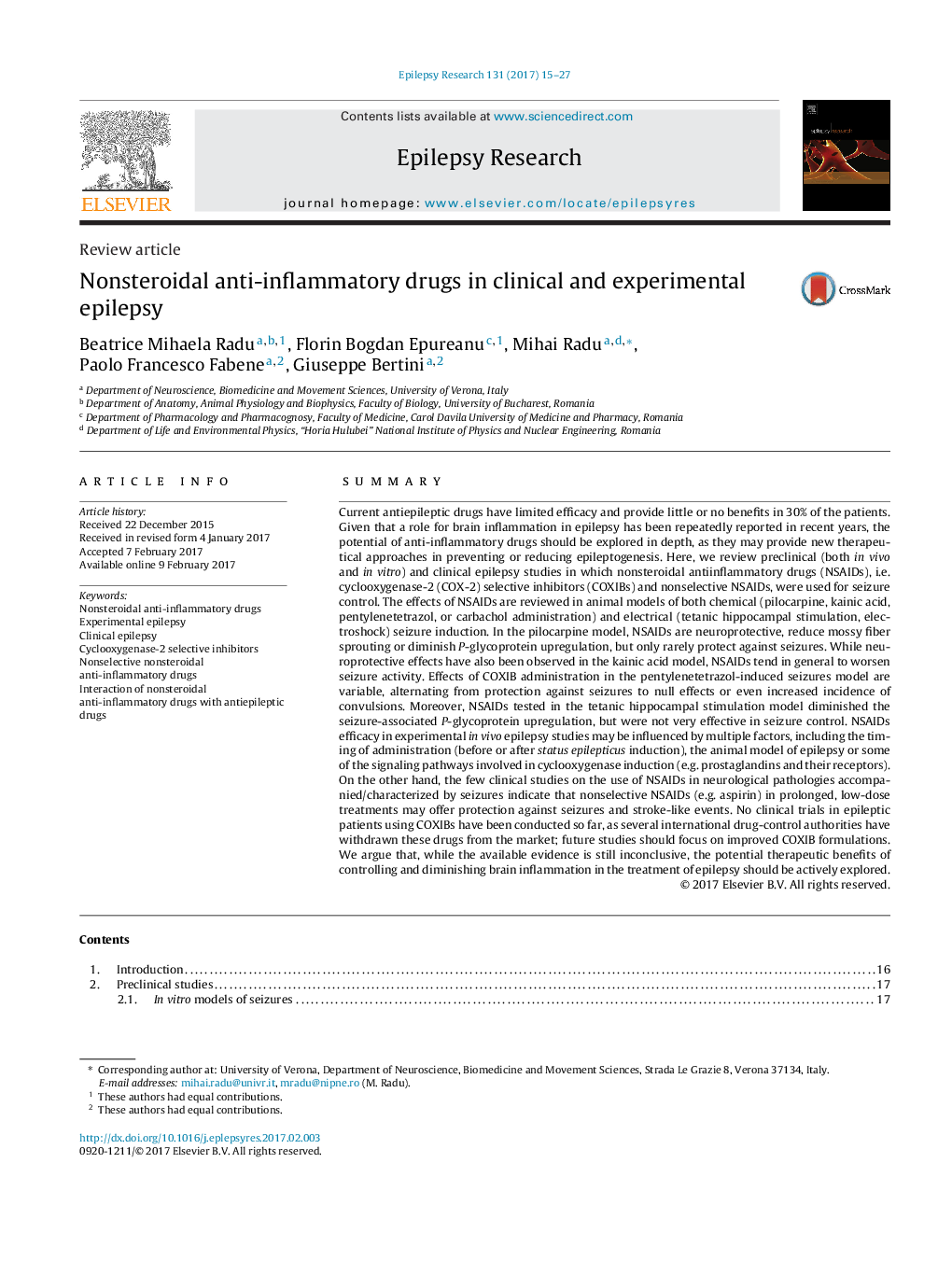| کد مقاله | کد نشریه | سال انتشار | مقاله انگلیسی | نسخه تمام متن |
|---|---|---|---|---|
| 5628600 | 1579892 | 2017 | 13 صفحه PDF | دانلود رایگان |
- NSAIDs are more neuroprotective than seizure-protective in the pilocarpine model.
- NSAIDs worsen seizures and rarely prevent neuronal loss in the kainic acid model.
- COXIBs effects in pentylenetetrazol and electrical stimulation models are variable.
- COXIBs have not yet been tested in seizure-associated clinical conditions.
- Nonselective NSAID therapies have yielded contrasting outcomes in seizure-associated neurological conditions.
SummaryCurrent antiepileptic drugs have limited efficacy and provide little or no benefits in 30% of the patients. Given that a role for brain inflammation in epilepsy has been repeatedly reported in recent years, the potential of anti-inflammatory drugs should be explored in depth, as they may provide new therapeutical approaches in preventing or reducing epileptogenesis. Here, we review preclinical (both in vivo and in vitro) and clinical epilepsy studies in which nonsteroidal antiinflammatory drugs (NSAIDs), i.e. cyclooxygenase-2 (COX-2) selective inhibitors (COXIBs) and nonselective NSAIDs, were used for seizure control. The effects of NSAIDs are reviewed in animal models of both chemical (pilocarpine, kainic acid, pentylenetetrazol, or carbachol administration) and electrical (tetanic hippocampal stimulation, electroshock) seizure induction. In the pilocarpine model, NSAIDs are neuroprotective, reduce mossy fiber sprouting or diminish P-glycoprotein upregulation, but only rarely protect against seizures. While neuroprotective effects have also been observed in the kainic acid model, NSAIDs tend in general to worsen seizure activity. Effects of COXIB administration in the pentylenetetrazol-induced seizures model are variable, alternating from protection against seizures to null effects or even increased incidence of convulsions. Moreover, NSAIDs tested in the tetanic hippocampal stimulation model diminished the seizure-associated P-glycoprotein upregulation, but were not very effective in seizure control. NSAIDs efficacy in experimental in vivo epilepsy studies may be influenced by multiple factors, including the timing of administration (before or after status epilepticus induction), the animal model of epilepsy or some of the signaling pathways involved in cyclooxygenase induction (e.g. prostaglandins and their receptors). On the other hand, the few clinical studies on the use of NSAIDs in neurological pathologies accompanied/characterized by seizures indicate that nonselective NSAIDs (e.g. aspirin) in prolonged, low-dose treatments may offer protection against seizures and stroke-like events. No clinical trials in epileptic patients using COXIBs have been conducted so far, as several international drug-control authorities have withdrawn these drugs from the market; future studies should focus on improved COXIB formulations. We argue that, while the available evidence is still inconclusive, the potential therapeutic benefits of controlling and diminishing brain inflammation in the treatment of epilepsy should be actively explored.
148
Journal: Epilepsy Research - Volume 131, March 2017, Pages 15-27
